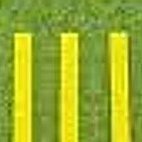Adsl Troubleshooting
-
Recently Browsing 0 members
- No registered users viewing this page.
-
Topics
-
-
Popular Contributors
-
-
Latest posts...
-
5
-
8
Analysis Trump’s 50-Day Pause: Russia’s Green Light for Ukraine Push
What Nth Korea has given by way of troops is a drop in the ocean and a good deal of these are manning the Nth Korean artillery units or are in non-active border crossing areas. -
645
Will there ever be a safe vaccine?
Would be better if I was the boss and Kennedy was my assistant. -
100
What Would Make You Leave Thailand, Permanently?
The same could be said about those aligning themselves with the USA. Following them into silly regime changes & wars this century alone that have benefitted nobody but the defense contractors, while killing ~1M, and displacing 10+X more. Agree, heard of the Thai doom & gloom, for past 25 yrs, and absolutely nothing has changed IMHO Established rules simply enforced, due to folks taking advantage when they were a bit more lacks. Som nam naa, as we see that now with the weed regulations. Only real change, for the negative, IMHO, is the 4 fold arrivals of tourist, from <10M in 2000, to shy of 40M, 2018 / 2019 & 35+M again in 2024. That and the rising middle class, and everyone owning cars or trucks. Making the metro & tourist areas way too congested. -
6
UK Secret Afghan Evacuation Exposed After 23-Month Gag Order Lifted
Would like to know who exactly did this. Was it deliberate, by some sympathizer. It smells. -
15
Question for the Brits re Jew Hating
Probably more to do with the new 'Brit' population of Muslims. Can't imagine many white folk care one way or the other. My first gf was Jewish, her parents didn't like me much, but they were happy for me to take the covers off the food for the Saturday evening meals and switch the lights on for them. I also dated devout Catholics, Anglicans and Baptists during my youth, all much of a muchness, each with their own little quirks. Would have been happy to date Muslims, Hindus or Buddhists, but none around in the 60s and 70s.- 1
-

-
-
Popular in The Pub





.thumb.jpeg.d2d19a66404642fd9ff62d6262fd153e.jpeg)









Recommended Posts
Create an account or sign in to comment
You need to be a member in order to leave a comment
Create an account
Sign up for a new account in our community. It's easy!
Register a new accountSign in
Already have an account? Sign in here.
Sign In Now